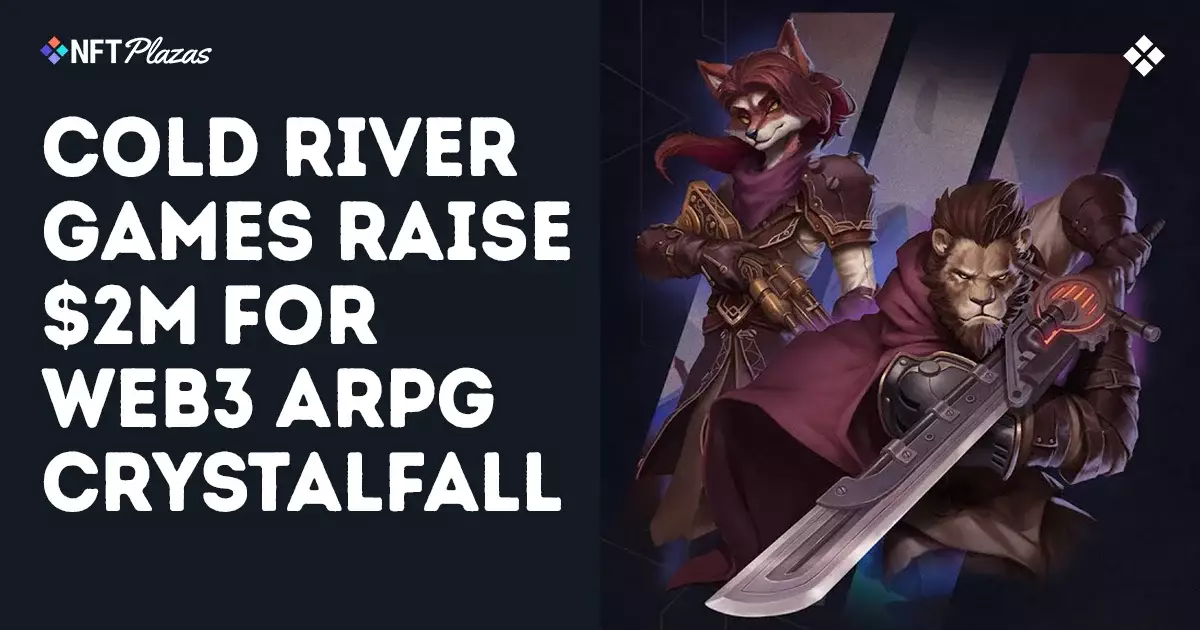The recent influx of capital into blockchain-based gaming ventures, like Cold River Games’ Crystalfall, exemplifies a recurring pattern in the industry: the seductive allure of web3 technology as a panacea for all gaming woes. Despite the hype, the reality is far less promising. The industry’s detour into integrating blockchain mechanics often feels more like a mirage than a meaningful innovation. This influx of $2 million, led by investors such as Beam Investments and Avalanche, underscores an optimistic belief that blockchain will revolutionize how games are funded, played, and monetized. Yet, beneath this shiny veneer lies a fundamental disconnect: blockchain’s promise of a secure, transparent barter economy often falls flat when subjected to real-world gaming dynamics.
Blockchain technology, lauded for its decentralization and immutability, is being positioned as an answer to the chaos of traditional gaming economies. But these claims risk being overblown; the integration of these systems into games like Crystalfall may not deliver on their promise. Despite the assurances of developers like Cold River’s CEO Åke André, claiming that blockchain can “enhance” loot systems, the industry is largely betting on a speculative future rather than proven value. This kind of overconfidence, coupled with a naive ‘tech-first’ mentality, threatens to distract from the core gaming experience that players actually seek—fun, challenge, and immersion—not just technological novelty.
The Unrealistic Expectations of Blockchain Gaming
The investment surge highlights a troubling misconception within the gaming community and industry insiders alike: that blockchain can serve as a game-changer with minimal trade-offs. Cold River’s belief that blockchain’s utility is best suited to ARPGs focused on loot and barter economy illustrates this. Yet, such a narrow perspective dismisses the complex ecosystem of players, developers, and market forces. The truth is, integrating blockchain into gaming often introduces issues like economic inflation, scalability concerns, and a fractured user experience—factors that could undermine the very foundations of enjoyable gameplay.
Furthermore, the faith placed in Avalanche and similar platforms to power in-game economies presumes an infrastructure capable of handling millions of transactions seamlessly and securely. But this idealistic view neglects the technological and regulatory hurdles that are yet to be satisfactorily addressed. As many blockchain projects stumble from a lack of real user engagement or sustainable economic models, investing heavily in these unproven systems feels less like strategic foresight and more like speculative gambling.
The Specter of Market Volatility and Industry Camelot
The current bubble of enthusiasm around web3 gaming reveals an industry caught between wishful thinking and harsh market realities. Crying out for innovation, many studios have become captivated by the unproven promise of a blockchain-enabled utopia—yet neglect the lessons of overhyped tech bubbles past. The harsh reality is that venture capitalists are often blinded by short-term gains, throwing money into projects with scant regard for long-term viability or genuine player needs.
The recent funding round for Crystalfall, amidst a challenging VC landscape, exposes the industry’s hubris. André’s comments on the “positive” nature of the funding—despite the market’s instability—highlight a dangerous optimism that often clouds judgment. Believing that blockchain will be a core feature of upcoming ARPGs ignores the persistent technical and ethical issues that confront the space. Most players remain skeptical, and for good reason: true innovation should prioritize player experience over the fleeting allure of blockchain novelty.
The Road Beyond the Hype: A Pragmatic Perspective
While Cold River’s ambitions are admirable in their craft and vision, the underlying assumptions remain flawed. The future of gaming likely does not rest on the blockchain’s broad adoption as a fundamental mechanic but rather on how well traditional developers can innovate around proven systems that prioritize fun, fairness, and accessibility. The missteps in blockchain gaming stem from overestimating technology’s capacity to fix intrinsic issues within the industry—such as monetization pressures, for example.
In my view, the real challenge facing the industry isn’t whether blockchain can be integrated but whether such integration genuinely enhances the gaming experience. Without critical skepticism, sentimentality for the tech’s futurism risks distracting us from the fundamental goal: delivering memorable, engaging, and fair games. As future developers and investors chase the shimmering mirage of web3, they must confront the uncomfortable truth that delivering meaningful innovation requires discipline, patience, and a focus on players—not just technology for its own sake.
















